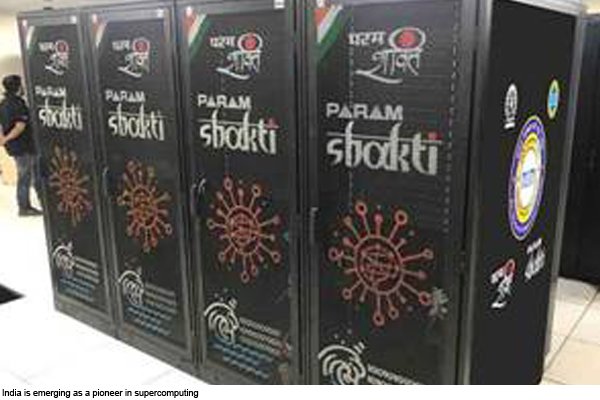New Delhi: India is fast emerging as a pioneer in high power computing with the National Super Computing Mission (ASM), which caters to the growing computational demands of education, research, MSME and oil exploration has been encouraging for startups in areas such as flood prediction and genomics and drug recovery.

Computing infrastructure has already been set up in four major institutes and work is in progress in setting up 9 more institutes. With the completion of the second phase of NSMK in September 2021, the country’s computing power will be 16 petaflops (PF). MoUs have been signed with a total of 14 leading institutes in India for setting up supercomputing infrastructure along with mobilization and manufacturing in India. These include IITs, NITs, National Laboratories and IISERs.
The planned infrastructure in the first phase of ASM has already been set up and its second phase will start soon. Phase III, launched this year, will take computing speeds to about 45 petaflops. It will include three systems of 3 PF each and a system of 20 PF as a national facility.
The National Supercomputing Mission was launched to enhance research capabilities and capabilities in the country so that they can be linked with the National Knowledge Network (NKN) as the backbone for building supercomputing grids. NSM is establishing a grid of supercomputing facilities in educational and research institutes across the country. Some part of it is being imported from abroad and some part of it is made indigenously. The mission is jointly run by the Department of Science and Technology (DST) and the Ministry of Electronics and Information Technology (MEITY) and the Center for Development of Advanced Computing (C-DAC), Pune, and the Indian Institute of Science (IISc), Bangalore. being implemented
The first home-built supercomputer Param Shivaay, was set up at IIT (BHU), followed by Param Shakti, Param Brahma, Param Tipi, Param Computer, installed at IIT Kharagpur IISER, Pune, JACASR, Bengaluru and IIT Kharagpur respectively.
A new dimension has been added to India’s journey towards achieving a leading position in supercomputing by combining HPC and Artificial Intelligence (AI). A 200 AI PF Artificial Intelligence Supercomputing System has been created and installed in C-DAC, which can manage incredibly large scale AI workloads by increasing the speed associated with computing associated with AI. High-Performance Computing-Artificial Intelligence (HPC-AI) Param Siddhi – AISuper Computer, has achieved a global ranking of 62 among the world’s top 500 most powerful supercomputer systems released on November 16, 2020.
The mission has also prepared the next generation of supercomputers by training over 4500 HPC conscious manpower and faculties. To expand HPC training activities, four NSM Nodal Centers have been set up at IIT Kharagpur, IIT Madras, IIT Goa and IIT Palakkad for training in HPC and AI. These centers have conducted online training programs in HPC and AI.
The network of research institutes in India, operated by NSM, in collaboration with industry, is enhancing technology and manufacturing capacity to make more and more parts in India. Whereas in the first phase, 30 percent value addition has been done in India which has been increased to 40 percent in the second phase. India has developed an indigenous server (Rudra), which can meet the HPC requirements of all governments and PSUs.
The backbone of the supercomputing system is through the National Knowledge Network (NKN) in three phases to provide high-performance computing (HPC) facilities to approximately 75 institutions and more than a thousand active researchers, working academics.
